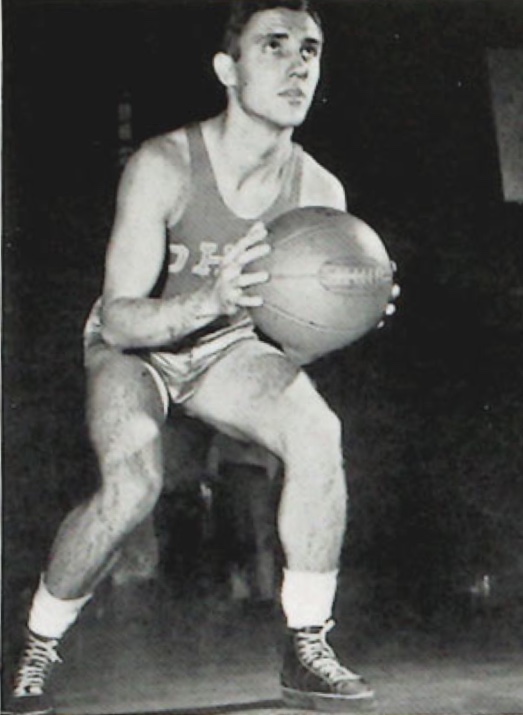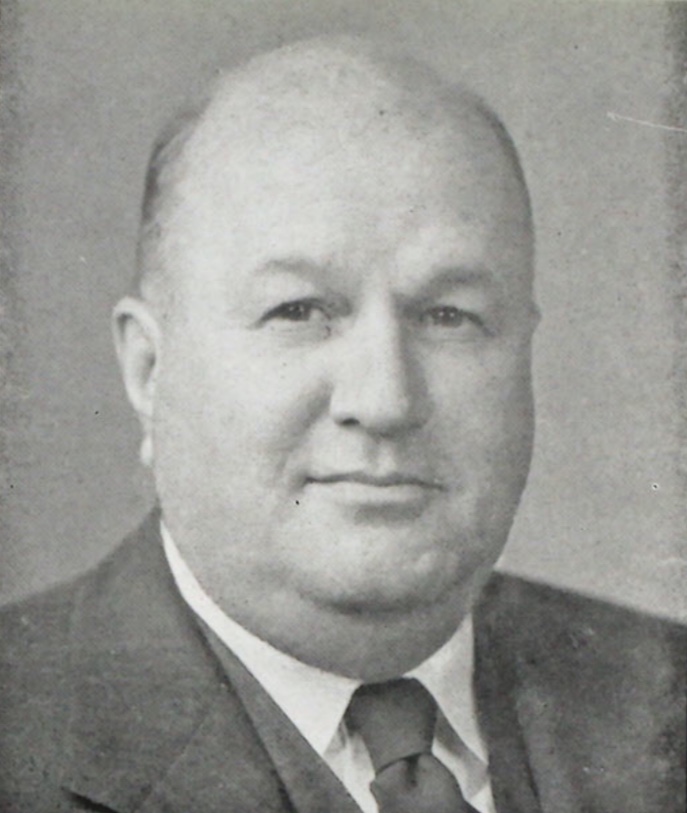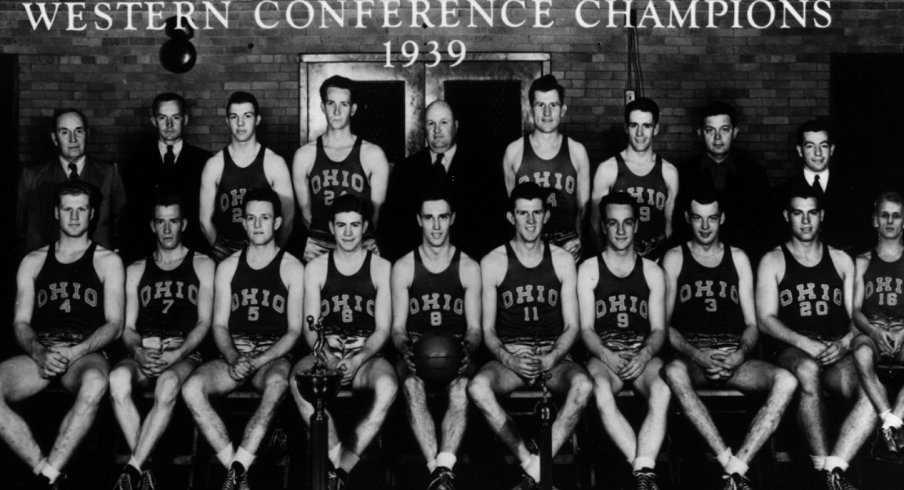Tonight, Texas Tech and Virginia will take the court in front of more than 70,000 fans inside of a converted football stadium, making it a far cry from the first NCAA Tournament championship game 80 years ago.
Back then, the tournament was known simply as the NCAA postseason national playoffs, created by the National Association of Basketball Coaches in response to the National Invitational Tournament's introduction a year prior. The NIT, operated by the Metropolitan Intercollegiate Basketball Association, was considered to be too focused on teams from the New York City area, as NYU and Long Island University were two of the six teams selected in the inaugural event.
The president of the NABC at the time was anything but a New Yorker, with deep Midwestern roots and a prominent position as head coach at one of the region's largest institutions. By 1939, Harold G. Olsen had already established himself as a prominent figure within the sport, credited with initiating the 10-second rule in 1937 while acting as head coach of the Ohio State basketball program.
Before he arrived in Columbus in 1922, however, the sport was largely an afterthought on campus, having failed to win a league title once in the decade since joining the Western Conference, known today as the Big Ten. Olsen's hiring would eventually prove to be a turning point in the school's vaunted athletic history, as the former All-American player at Wisconsin had found success in four seasons as a coach at Bradley and Ripon Colleges.
As The Lantern wrote upon the news of Olsen's hiring:
"Announcement of the appointment of Harold G. Olsen, former University of Wisconsin athlete, as basketball coach at Ohio State, was met with approval loudly voiced in all University quarters Sunday.
"Mr. Olsen's record as a basketball player, and as a coach at Ripon, Wis., is the kind that a man coming to fill the position at Ohio State should have.
...
"Basketball at Ohio State has not kept pace with the standing required in football. Mr. Olsen is to make basketball his major -- if not his sole -- endeavor. With the opening of school next fall he will set his men to work. There will be no waiting for the conclusion of the football season so as to release athletes and coaches from one sport for the other.
"As the situation is viewed at the distance of eight months, it would seem that the conference is due for somewhat of a jolt next season when the race for the basketball championship gets under way."
The 1922-23 Buckeyes went 1-11 in conference play and finished tied for last place.
But Olsen would eventually turn things around, winning the league title in his third season after finishing 14-2.
After 20 seasons in the old Armory, a hulking brick structure located on the current site of the Wexner Center for the Arts, the team moved its home games to what's now known as Taft Coliseum at the Ohio Expo Center and State Fairground for the 1920 season. At the Fairgrounds, crowds of 5,000 or more regularly began filing in to watch Olsen's teams compete, as the Buckeyes would finish with a record over .500 in 17 of his 24 seasons at the helm.

As many fans were reminded (or informed for the first time) when the two schools competed for a national title on the gridiron four years ago, Ohio State and Oregon faced off in the first tournament final, famously held inside Patten Gymnasium on the campus of Northwestern University. But although the team was led by the man ostensibly in charge of running the tournament, the 1939 squad looked far from title-worthy as the season began.
Coming off a 12-8 record the year prior, Olsen's troops headed to the west coast for much of their non-conference schedule, playing two games each against Washington, UCLA, and California, totaling six games in eight days. Unsurprisingly, the fatigued Buckeyes won only two of them and entered league play with an uninspiring 3-4 record.
Once back on familiar turf, however, the Buckeyes rounded into form, going 9-2 against Western Conferences foes and winning Olsen's third league title. The conference crown won OSU a spot in the inaugural eight-team postseason playoff alongside Brown, Villanova, and Wake Forest in the East region.
Led by the conference's leading scorer and All-American forward Jimmy Hull's 18 and 25-point scoring performances, the Buckeyes took down Wake Forest 64-52 and Villanova 53-36 at the historic Palestra in Philadelphia, earning a trip to Evanston nine days later. But once again, the Ohio State squad had trouble containing a Pacific Coast Conference foe, falling 46-33 to the Ducks.
Though his teams wouldn't return to the tournament for another five seasons, Olsen worked to expand its influence as the NCAA basketball committee chairman. The final moved to the larger Municipal Auditorium in Kansas City from 1940-42 before a six-year stint at Madison Square Garden aimed at competing directly with the NIT.
By this time, Olsen's influence had expanded beyond the basketball court, as he was eventually named an assistant to Ohio State athletic director L.W. St. John. When the undefeated 1944 football team featuring Heisman Trophy winner Les Horvath and star lineman Bill Willis was denied the chance to go to the Rose Bowl after having gone the year prior, Olsen publicly came out against the decision.
"These fellows were the best, cleanest, and grandest fellows to play for Ohio State," he told The Lantern after the decision was announced by the Big Ten. By this point in time, however, Olsen's troops on the hardwood had entered the national spotlight again themselves.
Led by a 6'9" center named Arnie "Smokes" Risen, who transferred from Eastern Kentucky State Teachers College in the fall of 1943, the Buckeyes would make it to MSG in March of 1944, defeating Temple before falling to Dartmouth 60-53 in the national semifinal. The following season, Risen and fellow all-conference performer Don Grate would lead the Buckeyes back to the same round after defeating Adolph Rupp's Kentucky Wildcats in the quarterfinals. But NYU would outlast the Buckeyes 70-65 in overtime, denying them a trip back to the title game.

After Risen departed for a hall of fame career in the NBA, his replacement at the pivot proved just as capable. 6'6" center Jack Underman won all-conference honors after leading the team to a 10-2 record against league foes in 1946, earning a third-straight postseason trip to New York City. But following a 46-38 victory over Harvard, Ohio State would fall in the National Semifinal for a third straight year, once again in overtime, as North Carolina would come away with a 60-57 win.
In the months following the loss to UNC, Olsen would receive an offer he couldn't refuse, making over $15,000 a year to coach and manage the newly-formed Chicago Stags of the nascent Basketball Association of America, which eventually merged with the National Basketball League in 1949 to form the NBA we know today. In his first season in Chicago, Olsen led the Stags to a 39-22 record before losing 4-1 to the Philadelphia Warriors in the inaugural BAA Finals.
Sadly, the veteran coach would never come as close to winning a title again, coaching two more seasons before leaving the Stags after consecutive third-place finishes in the western division. The following winter, Olsen would return to the college ranks at, ironically, the site of the first NCAA title game: Northwestern.
In two seasons with the Wildcats, though, the old coach amassed a losing record of 19-25. On October 28, 1953, Olsen passed away at the age of 58, having never won a national championship at either the pro or collegiate level.
In over seven decades since Olsen left Ohio State, the basketball program he helped establish has produced 45 All-Big Ten performers, 16 Big Ten regular-season titles (trailing only Indiana and Purdue for most all-time), 12 consensus All-Americans, 6 Final Four appearances, and one national championship. That tournament win in 1960 and subsequent title game appearances in '61 and '62, under the leadership of Fred Taylor, is considered by many to be 'golden era' of Ohio State hoops.
| Coach | Seasons | Wins | Win % | Big Ten Reg. Season Titles | All-Big Ten Performers | Consensus All-Americans | Final Fours |
|---|---|---|---|---|---|---|---|
| Harold Olsen | 24 | 255 | .570 | 5 | 16 | 2 | 4 |
| Fred Taylor | 18 | 297 | .652 | 7 | 18 | 4 | 4 |
| Thad Matta | 13 | 337 | .733 | 5 | 7 | 3 | 2 |
Taylor is honored with a banner hanging in the rafters of Value City Arena alongside the retired numbers of five players, the earliest of whom (John Havlicek and Jerry Lucas) first set foot on campus in 1959. Alongside Taylor's name is that of Thad Matta, who himself reestablished Buckeye basketball in the national picture with a pair of Final Four appearances.
Without banners, statues, or buildings bearing his name, Olsen's legacy remains hidden behind those of his successors in Columbus. However, visitors of the Naismith Memorial Basketball Hall of Fame in Springfield, Massachusetts will see his name among the hall's first class of honorees in 1959.
Olsen was, and still should be, considered one of the foremost contributors to the game's evolution and popularity, even if it's not always reflected on the campus where he spent nearly a quarter-century coaching.


